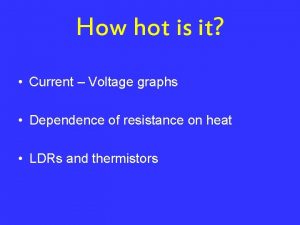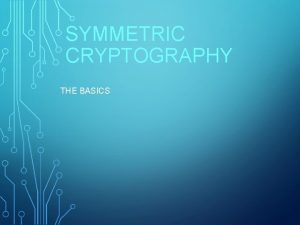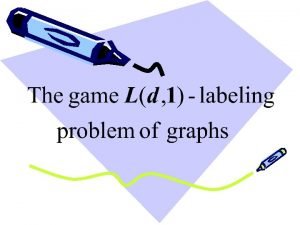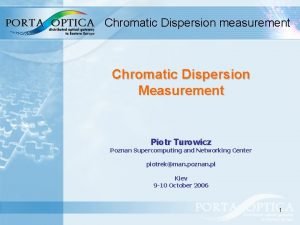A Symmetric Chromatic Function for Voltage Graphs Noah







- Slides: 7

A Symmetric Chromatic Function for Voltage Graphs Noah Donald The Ohio State University, Columbus Undergraduate Research Advisor: Prof. Sergei Chmutov Assistance on Project by Ishaan Shah OSU-Marion, MIGHTY LXII Noah Donald | A Symmetric Chromatic Function for Voltage Graphs

Voltage Graphs and a Proper Coloring. Example of the edge polarization function: Example of a properly colored edge Noah Donald | A Symmetric Chromatic Function for Voltage Graphs

A Symmetric Chromatic Function. Expanding the product term in the SCF gives a subsets of edges formulation. We define the symmetric chromatic function (SCF) as: Example Calculation: We can sum over all colorings of the graph by introducing the second factor to “encode” the proper coloring condition. Noah Donald | A Symmetric Chromatic Function for Voltage Graphs

Squiggly Voltage Graphs. Proper coloring of a squiggly edge: Example of this formula: 4 Types of Edges: • Full edges are edges which require the proper coloring condition for the vertices connected to the edge. • Squiggly edges are edges which require an improper coloring for the vertices connected to the edge. 1 Using this algorithm, we can decompose voltage graphs into combinations of disconnected graphs and connected squiggly graphs. By coloring any one vertex in a connected squiggly graph, we can find a proper coloring by propagating the group element by paths to any other group element. Noah Donald | A Symmetric Chromatic Function for Voltage Graphs 3 2 Example of a squiggly graph whose colorablity is independent of the chosen coloring.

Moving Rules. The goal is to move edges over other edges and leave the SCF invariant under this transformation. This formula holds for moving squiggly edges over squiggly edges and for moving full edges over squiggly edges. If we think of the vertices as labeled here, then we can write a formula which incorporates arbitrary edge polarizations. The edge here has “picked up a phase” from the edge it moved over. Noah Donald | A Symmetric Chromatic Function for Voltage Graphs

Going Forward and Algebraic Bases. By performing the decomposition into “radiating voltage stars”, we can use this as an algebraic basis for the SCF. 4 1 3 4 6 5 3 2 Example term: 4 1 3 Noah Donald | A Symmetric Chromatic Function for Voltage Graphs 2

References. • Noble, S. , Welsh, D. (1999). A weighted graph polynomial from chromatic invariants of knots. Annales de l’institut Fourier, 49(3), 1057– 1087. • Stanley, R. P. (1995). A Symmetric Function Generalization of the Chromatic Polynomial of a Graph. Advances in Mathematics, 111, 166 -194. • Zaslavsky, T. (1982). Signed Graph Coloring. Discrete Math, 39, 215 -228. • Zaslavsky, T. (1982). Chromatic invariants of signed graphs. Discrete Math, 42, 287– 312. Noah Donald | A Symmetric Chromatic Function for Voltage Graphs













